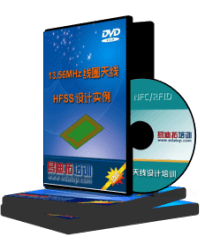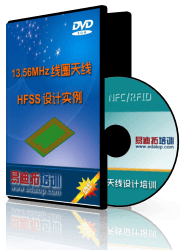- 易迪拓培训,专注于微波、射频、天线设计工程师的培养
Antenna design for plasma ignition at 13.56MHz
I'm interested in this topic. Do you have any (electrical) details on the plasma properties, when ignited? I mean what is its specifical (volume) resistivity/conductivity, etc...
The ones I have seen just have heavy guage wire wound around the vessel many times to form a coil.You would need to tune out whatever impedance the final coil makes, when the plasma is formed, to match the generator impedance.
The plasma conductivity relation is given by (n*e^2)/m*μ. where
e= charge of electron
n=plasma density
m=mass of electron
μ= collisional frequency of electron with neutral.
Hello biff44 how the matching of generator impedance can be done. Kindly help me to know as i am very new to this field
dee25pak,
what is your structure like? Talking about matching without any details how the device looks like (generator output, plasma environment/structure, etc) is meaningless.
The unit that I worked on, a long time ago, hooked up to a coil around a tokomak.We laid a flourescent light bulbe across the feed point to the coil, and adjusted the "tuning" knob inside the industrial RF signal generator in real time.
the tuning knob was probably connected to a high voltage variable capacitor of some sort that tried to match the impedance of the coil to the output impedance of the generator.
You can look up all sorts of ham radio articles on "antenna tuners" to get an idea of how to do it.
The problem is that you can not measure the loop's actual impedance until the plasma is excited.If you try to measure the impedance of the loop with low power (a network analyzer for instance), you will just record the coil's inductance, and will not know anything about how the plasma itself influences the load impedance.
My structure is a Ceramic cylinder of diameter around 10cm and length 15cm on which the primary coil should be bound. The whole assembly is enclosed by stainless steel cylinder of 15cm diameter and 18cm in length. Now my problem is, how to decide the number of turns in the loop. I have gone through the literature and i found that peoples have used 2 to 3 turns. I am not sure how these figures came out.
Hi Dee25pak
Try to findfollowing paper.It may be helpful for you
Improvement of the lifetime of radio frequency antenna for plasma generation
http://link.aip.org/link/?RSINAK/71/1134/1
This document is also good reference
http://www.ornl.gov/sci/fed/Technolo.../nonfusion.pdf
Abhishekabs
Two remarks:
The field of your coil can fairly be approximated by a magnetostatic description, cause the dimension are small related to the wavelength. Thus simulation is rather simple. Free tools as Quickfield student's edition basically can do the job.
I fear that you'll get very high losses in your stainless steel container. They may be sufficient for complete design failure. Usual inductive 13.56 MHz plasma generators are using quartz containers, as far as I've seen e. g. with analytical instruments.
Generally, I'm no completely sure about your intention. It seems to me, that the topic isn't plasma ignition but plasma generation, that means the 13.56 MHz is the only power source to the plasma?
In this case, you have to know the intended plasma power as a major design parameter. Plasma ignition only is mainly a matter of field strength and doesn't require much power.
Thanks abhishekabs for the link of papers. I will surely go through them.
Dear FvM
you are very correct that my topic is plasma generation not plasma ignition. More preciously I have been asked to design the loop antenna for inductively coupled plasma and the matching network for it. As I am very new to this field, I am unable to decide how to start attacking this problem.
The general keyword for the technique is ICP (inductively coupled plasma). Low-power ICP applications starting at 30 W RF power have been reported. The technique is widely used in analytical instruments for chemical element analysis by emission spectroscopy. There is some basic literature as P.W.J.M. Boumans, Inductively Coupled Plasma Emission Spectroscopy, Part 2: Application and Fundamentals, John Wiley&Sons, New York 1987. It's said to cover the instrument design aspect, too. But I don't have it.
I think, that most existing applications have been empirically designed by trial and error. Mainly, cause the plasma properties are unknown to some extent.
Thanks AFV . I will try to go through the book suggested by you and I will once again come to this platform if something is not clear.
bye
申明:网友回复良莠不齐,仅供参考。如需专业学习,请查看13.56MHz NFC/RFID天线设计培训课程。
上一篇:ADS2005A中端口设置
下一篇:13.56MHzRFID读写器天线的设计与仿真











 沪公网安备 31011202014168号
沪公网安备 31011202014168号
 1427313829
1427313829 旺旺在线
旺旺在线 Skype Online
Skype Online 13761612886
13761612886 官方淘宝店
官方淘宝店
